
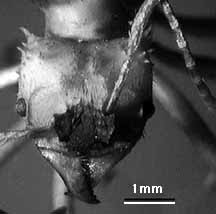
| return to guide introduction | go to genus list |
|
 |

Uniform habitus; polymorphic; 11-segmented antennae; gaster tuberculate (contrast Atta); frontal carinae short, not extending across face to margin of vertex; no antennal scrobe; scapes long; promesonotal dorsum with 3 or more pairs of erect spines. Common leaf cutting ants of diverse habitats; nests in ground or canopy, not forming mounds of excavated soil.
|
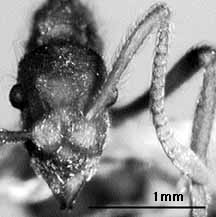 |
Uniform habitus; monomorphic; 11-segmented antennae; frontal lobes closely approximated, not separated by broad posterior lobe of clypeus; covered with dense, silky pubescence. Most species nest in forest leaf litter or under dead wood; two species form exposed nests of white, flocculent fungus suspended from tree trunks and undersurfaces of leaves; common in wet forest.
|
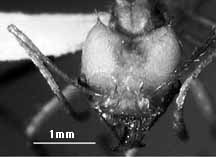 |
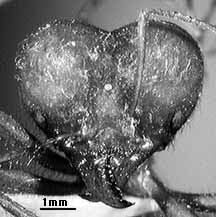
Uniform habitus; polymorphic; 11-segmented antennae; gaster smooth (contrast Acromyrmex); frontal carinae short, not extending across face to margin of vertex; no antennal scrobe; scapes long; promesonotal dorsum with 2 pairs of erect spines. Common leaf cutting ants of diverse habitats; large nests in ground with mounds of excavated soil.

Uniform habitus; monomorphic; 11-segmented antennae; frontal lobes greatly expanded; pronounced antennal scrobes; lacking erect setae (at most small hooked hairs); dorsum of mesosoma usually with low conical to blunt tubercles, never with spines. Nests in leaf litter, soil, under epiphytes; one species with pendant nest of accreted soil; common.
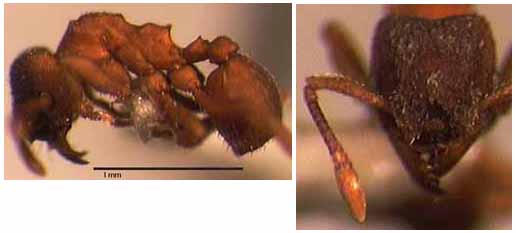
One species, M. vinsoni Mackay, known from Lomas Barbudal and Santa Rosa, in Guanacaste (U. Mueller, pers. com.; see W. Mackay, Rev. Biol. Trop. 46(2):421-426); very similar to M. hartmanni from Texas (figured here); rare.

Three species known from Costa Rica; monomorphic; 11-segmented antennae; small; frontal lobes closely approximated; frontal carinae fading out before reaching margin of vertex. Nests in soil; rare.
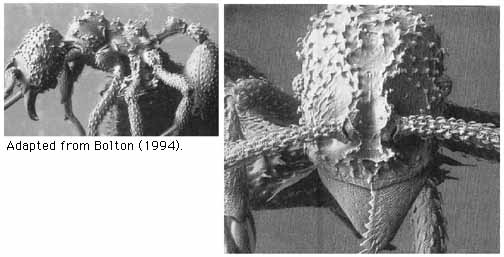
One species in Costa Rica? Monomorphic; 11-segmented antennae; small; body covered with short tubercles tipped with hooked hairs; no erect spines. Rare.
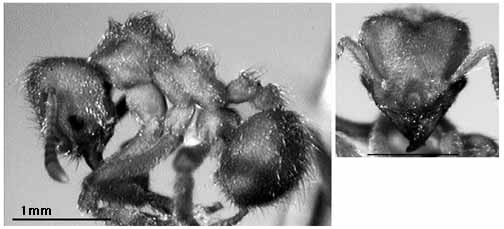
Uniform habitus (one species in Costa Rica?); antennae 11-segmented; frontal lobes widely separated by posterior lobe of clypeus; body covered with dense, silky pilosity. Nests in soil; common.
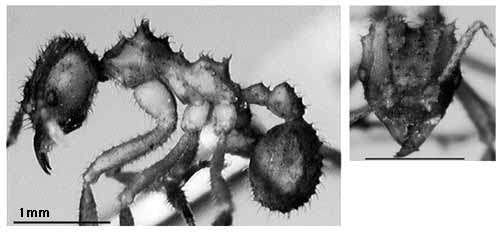
Somewhat variable habitus; monomorphic; 11-segmented antennae; frontal carinae extend to or nearly to margin of vertex, forming inner margin of shallow antennal scrobe; gaster tuberculate. Nest in soil, inconspicuous; moderately common.
Page author:
John T. Longino, The Evergreen State College, Olympia WA 98505 USA. longinoj@evergreen.edu